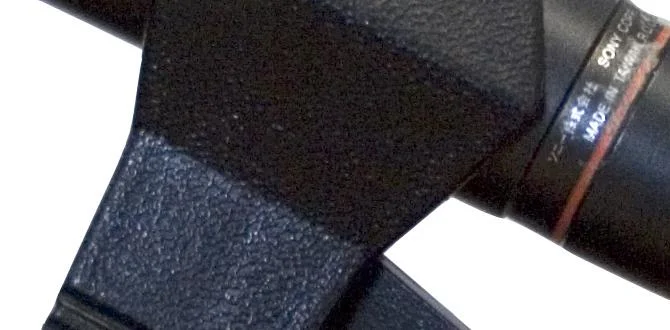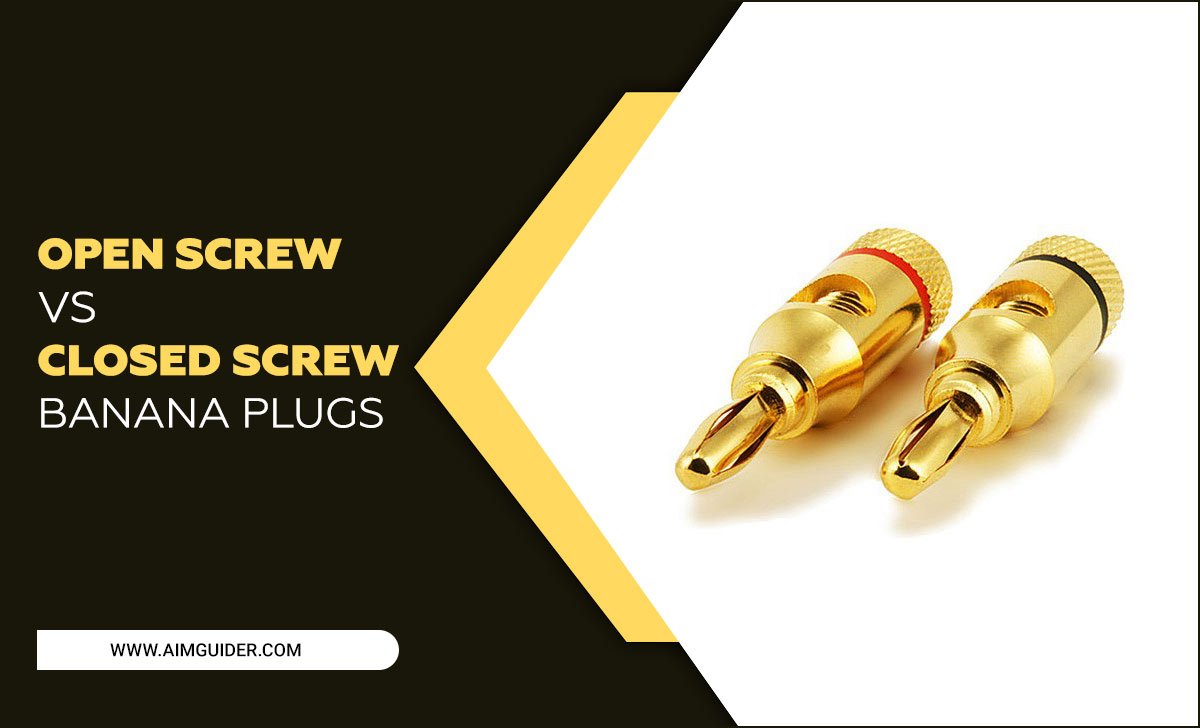Quick Summary:
Finding the best TV under $700 for movies is achievable! Look for models with strong picture quality (like good contrast and color), smart TV features for streaming, and decent sound. Our guide focuses on TVs that excel in these areas without breaking the bank, ensuring an immersive movie experience.
Finding a great TV for movies that doesn’t empty your wallet can feel like a quest. Many options boast impressive specs, but which ones truly deliver for cinematic magic at a budget-friendly price? You might be overwhelmed by terms like HDR, refresh rates, and panel types. Don’t worry, I’m Bob E Riley from Aimguider, and I’m here to make choosing the perfect TV under $700 for your movie nights simple and stress-free. We’ll walk through what really matters for film fans and point you toward some top contenders.
Why Your TV Choice Matters for Movie Lovers
Watching movies is about more than just seeing the screen; it’s about immersion. The right TV pulls you into the story with vibrant colors, deep blacks, and smooth motion. For movie buffs, these elements are crucial for replicating the cinema experience at home. A TV that struggles with dark scenes or shows choppy action can pull you right out of an epic scene, turning enchantment into annoyance. That’s why we’re focusing on TVs that prioritize the visual fidelity needed for a truly captivating movie night.
Key Features for Cinematic Viewing Under $700
When you’re on the hunt for the best TV under $700 for movies, certain features will make a bigger difference than others. Let’s break down what to look for:
Picture Quality: The Star of the Show
This is arguably the most critical aspect. For movies, you want a picture that’s sharp, colorful, and has great contrast.
Resolution: At this price point, 4K Ultra HD (3840 x 2160 pixels) is the standard and essential for detail. Don’t settle for less if you’re serious about movie quality.
Contrast Ratio & Black Levels: This determines how well the TV can display deep blacks and bright whites simultaneously. High contrast means more depth and detail, especially in darker movie scenes which are common in many genres. Look for TVs that use technologies like local dimming if possible, though this is less common in this price range and often found on mid-range to high-end sets.
Color Accuracy & HDR Support: A wider color spectrum and support for High Dynamic Range (HDR) formats like HDR10 and Dolby Vision (if you can find it) will make colors pop and provide more detail in light and dark areas. HDR makes a significant difference in how movies are meant to be seen, with more nuanced shading and brighter highlights.
Panel Type: While OLED is usually out of this price range, good QLED or advanced LED panels can offer excellent color and brightness. VA panels often offer better contrast than IPS panels, which is great for movies.
Smart TV Features & Streaming
Most modern TVs are smart TVs, but the operating system and app availability can vary. For movie streaming, you’ll want:
Easy-to-use Interface: A simple and intuitive system makes finding your favorite streaming apps a breeze.
App Selection: Ensure your preferred streaming services (Netflix, Disney+, HBO Max, etc.) are readily available.
Reliable Performance: A sluggish smart TV can be frustrating. Look for reviews that mention smooth navigation.
Sound Quality: More Than Just Dialogue
While no TV in this budget range will replace a dedicated soundbar or surround system, some offer better audio than others.
Clear Dialogue: Essential for following the plot.
Decent Bass: Can add impact to action sequences and music scores.
Connectivity: Hooking Up Your Gear
Ensure the TV has enough of the right ports.
HDMI Ports: At least 3 HDMI ports are usually sufficient for a game console, streaming device, and Blu-ray player. Look for HDMI 2.1 if you plan on gaming and want to keep up with future technologies, though it’s less critical for pure movie watching at this price point.
USB Ports: Useful for media playback or powering external devices.
Top TVs Under $700 for Movie Enthusiasts: Our Picks
Based on features and value, here are a few types of TVs that consistently offer great performance for movies under $700. These are not specific model recommendations as availability and prices fluctuate, but rather categories and brands to focus on.
1. TCL’s QLED Series (e.g., 5-Series or 6-Series when on sale)
TCL has made a name for itself by offering premium features at affordable prices. Their QLED TVs are known for their excellent color volume and brightness, making them fantastic for HDR content.
Pros: Vibrant colors, good HDR performance, often includes Dolby Vision support, competitive pricing.
Cons: Sound can be average, some models might have slightly less sophisticated local dimming compared to pricier options.
When considering TCL, you’ll often find models that punch above their weight class. For instance, a TCL 5-Series QLED TV can offer a remarkably vibrant picture, especially with HDR content, bringing out the details in scenes filled with both light and shadow. You can learn more about display technologies and their impact on picture quality from resources like the DisplayMate display technology guide.
2. Hisense ULED TVs (e.g., U6 Series or U7 Series when on sale)
Hisense is another brand that consistently delivers strong performance for the money. Their ULED TVs often feature Quantum Dot technology and good local dimming capabilities, which are key for great contrast and bright, vivid colors.
Pros: Bright picture, good contrast for the price, often includes features like Dolby Vision and wide color gamut.
Cons: Smart TV interface can sometimes be less intuitive than competitors, motion handling might not be top-tier for fast action.
Hisense TVs often strike a great balance between picture quality and price. Their ULED technology aims to enhance brightness, contrast, and color, which are all important for an immersive movie experience.
3. Vizio M-Series Quantum or V-Series
Vizio offers excellent value, and their M-Series Quantum TVs often provide QLED color and good HDR performance. Some models even include full-array local dimming, which dramatically improves black levels and contrast, crucial for watching movies in a dimly lit room.
Pros: Good contrast, bright picture, often supports HDR10+ and Dolby Vision, competitive pricing.
Cons: Smart TV platform (SmartCast) can have mixed reviews regarding speed and app selection for some users.
Vizio’s commitment to bringing advanced features like Quantum Dot technology and local dimming to more accessible price points makes them a strong contender for movie lovers on a budget.
4. Samsung Crystal UHD Series (when on sale)
While Samsung’s higher-end QLEDs are more expensive, their entry-level Crystal UHD TVs can sometimes dip below $700 during sales and offer decent picture quality with good color reproduction thanks to Crystal Display technology.
Pros: Good color saturation, user-friendly Tizen smart platform, sleek design.
Cons: Contrast and black levels might not be as deep as some competitors, HDR performance is typically more basic.
Samsung’s Tizen operating system is widely praised for being one of the most intuitive and fastest smart TV platforms available, which is a big plus for easy access to all your favorite movies and shows.
Setting Up Your TV for the Best Movie Experience
Once you’ve chosen your TV, a few tweaks can make a big difference.
Picture Settings: Calibrating for Cinema
Most TVs come with presets like “Vivid” or “Sports.” For movies, you’ll want something more natural.
1. Select a “Movie,” “Cinema,” or “Filmmaker” Mode: These modes typically aim for the most accurate picture, closer to what the director intended.
2. Adjust Brightness and Contrast: Set them so that details in the darkest and brightest scenes are visible without being washed out or crushed.
3. Color Temperature: A “Warm” setting is usually best for movies, as it mimics the color temperature of projectors and reduces eye strain.
4. Turn Off Unnecessary Motion Smoothing: Features like “Motion Interpolation” or “TruMotion” can make film look like a soap opera (often called the “soap opera effect”). For movies, disable these to preserve the intended film look. You can find more about proper TV calibration at resources like Rtings.com’s TV calibration guide.
Sound Enhancements: Boosting the Audio
While TV speakers are limited, here’s how to get the most out of them, or consider an upgrade.
Dialogue Enhancements: Look for settings like “Clear Voice” or “Dialogue Boost” available in the TV’s audio menu.
Surround Sound Emulation: Many TVs offer virtual surround sound modes. Experiment with these to see if they add a sense of spaciousness.
Consider a Soundbar: If you regularly watch movies and sound is important, even an entry-level soundbar under $200 can offer a dramatic improvement over built-in TV speakers. It’s a common accessory for home theater enthusiasts.
Room Lighting: The Unsung Hero
The best TV can be hampered by poor lighting.
Reduce Glare: Position your TV to avoid direct sunlight or bright overhead lights reflecting off the screen. If glare is unavoidable, consider affordable anti-glare screen protectors or adjust room light.
Dim the Lights: For a true cinematic feel, watch movies in a dimly lit room. This enhances contrast and makes the picture more immersive.
Essential Accessories for Your Movie TV
While the TV is the centerpiece, a few accessories can elevate your movie-watching experience significantly.
1. Streaming Devices
Even if your TV has a great smart platform, a dedicated streaming device can offer more speed, a wider app selection, or support for newer formats.
Roku Streaming Stick/Box: Known for its simple interface and wide app support.
Amazon Fire TV Stick: Integrates well with Amazon services and offers voice control via Alexa.
Google Chromecast with Google TV: Offers a personalized content interface and excellent integration with Google services.
These devices often cost between $30 and $60, making them a small but impactful addition to your setup.
2. HDMI Cables
For 4K HDR content, using an appropriate HDMI cable is important.
High-Speed HDMI 2.0 or 2.1: Ensure your cables are rated for the bandwidth needed for 4K HDR at higher frame rates if supported by your TV and source. Most modern “high-speed” cables will work well for 4K at 60Hz and HDR. For 4K at 120Hz, you’d need HDMI 2.1, but this is less common for movie sources. For basic 4K HDR movie viewing, a good quality HDMI 2.0 cable is usually sufficient and affordable.
3. Surge Protector
Protect your investment from power surges. A good surge protector can prevent costly damage from electrical spikes. Look for one with enough outlets for your TV and connected devices.
4. Budget Soundbar
As mentioned, this is a huge audio upgrade. Even an affordable soundbar can provide clearer dialogue, added bass, and a wider soundstage than built-in TV speakers. Brands like Vizio, TCL, and Hisense also make budget-friendly soundbars.
5. Universal Remote
Tired of juggling multiple remotes? A programmable universal remote can consolidate control of your TV, soundbar, and streaming device, simplifying your setup. Logitech Harmony remotes were popular for this, though their new production has ceased, alternatives exist. This adds convenience and can make movie night selection much smoother.
A Look at TV Technologies: What Helps Movies Shine
Understanding a few core technologies can help you decipher spec sheets and make informed choices.
Quantum Dot (QLED)
Quantum dots are tiny semiconductor crystals that emit specific colors of light when illuminated. In TVs, they are used to create a wider and more vibrant color spectrum, leading to more lifelike and saturated colors on screen. For movies, this means richer reds, deeper greens, and brighter blues, making visuals truly pop.
Full Array Local Dimming (FALD)
This is a backlight technology that divides the TV’s LEDs into zones. The TV can then dim or turn off these zones independently in darker areas of the image. For movies, this is a game-changer for contrast and black levels. Instead of a uniform backlight that can make blacks look grayish, FALD allows for much deeper blacks and brighter whites simultaneously, adding significant depth and detail, especially in dimly lit scenes. While full FALD is trickier to find under $700, some models offer it with fewer zones, still providing a noticeable improvement.
High Dynamic Range (HDR)
HDR expands the range of both contrast and color on a display. This results in brighter, more detailed highlights, deeper, more nuanced blacks, and a much wider spectrum of colors. For movies, HDR makes a massive difference, bringing out subtle details in shadows and the brilliance of highlights without blowing out the image. Common HDR formats include HDR10, Dolby Vision, and HDR10+. Look for TVs that support at least HDR10. Dolby Vision support is a bonus that can offer even better HDR performance.
Comparison Table: Key Features to Prioritize
To help visualize, here’s a table of the most important features for movie watching under $700:
| Feature | Importance for Movies | What to Look For < $700 |
|---|---|---|
| Resolution | High | 4K UHD (3840×2160) |
| Contrast Ratio / Black Levels | Very High | VA panel is good; FALD is a bonus. |
| Color Accuracy / HDR Support | High | HDR10 support is standard; Dolby Vision is a plus. Quantum Dot (QLED) technology enhances colors. |
| Motion Handling | Medium-High | 60Hz native refresh rate is common; look for good motion interpolation settings (but know when to turn them off). |
| Smart TV Platform | Medium | Intuitive interface, access to popular apps. |
| Sound Quality | Medium-Low (for built-in) | Clear dialogue is key; consider a soundbar. |
| HDMI Ports | Medium | At least 2-3 HDMI ports. |
Frequently Asked Questions (FAQ)
Q1: Is 4K resolution really necessary for a TV under $700?
A: Yes, absolutely. 4K is the standard for modern TVs, and it’s crucial for getting enough detail and sharpness for a cinematic experience, especially on screen sizes 50 inches and larger. Most TVs under $700 now offer 4K resolution.
Q2: Should I prioritize HDR support over other features?
A: HDR support is very important for movies, as it significantly enhances contrast and color. While it’s not the only thing, look for TVs that offer at least HDR10. Models with Dolby Vision are even better if they fit your budget.
Q3: What does “refresh rate” mean for movie watching?
A: Refresh rate (measured in Hz) is how many times the screen updates per second. For movies, which are typically shot at 24 frames per second, a native 60Hz refresh rate is perfectly adequate. High refresh rates (120Hz) are more important for fast-paced gaming than for watching most movies.
Q4: How important is the TV’s smart platform?
A: It’s important for convenience. A good smart platform means you can easily access streaming services like Netflix, Disney+, and Hulu without needing an extra device. However, if a TV has a slightly weaker smart system but superior picture quality, you can always add an affordable external streaming stick (like Roku or Fire TV).
Q5: Can built-in TV speakers provide a good movie experience?
A: Generally, no. Most built-in TV speakers are not designed for immersive audio. While they can handle dialogue, they often lack the depth, bass, and spaciousness needed for a true movie experience. Investing in even a budget soundbar will make a huge difference.
Q6: What’s the difference between QLED and standard LED TVs?
A: QLED TVs use a layer of Quantum Dots to enhance color and brightness, resulting in more vibrant and lifelike images. Standard LED TVs use a simpler backlight system. For movie watching, QLED often offers a more dynamic and colorful picture.
Conclusion
Choosing the best TV under $700 for movies doesn’t mean compromising quality. By focusing on essential picture quality features like 4K resolution, good contrast, and HDR support, and being aware of brands that consistently offer value (like TCL, Hisense, and Vizio), you can find a fantastic display. Remember to adjust your picture settings for a cinematic look and consider a budget soundbar to truly bring your favorite films to





